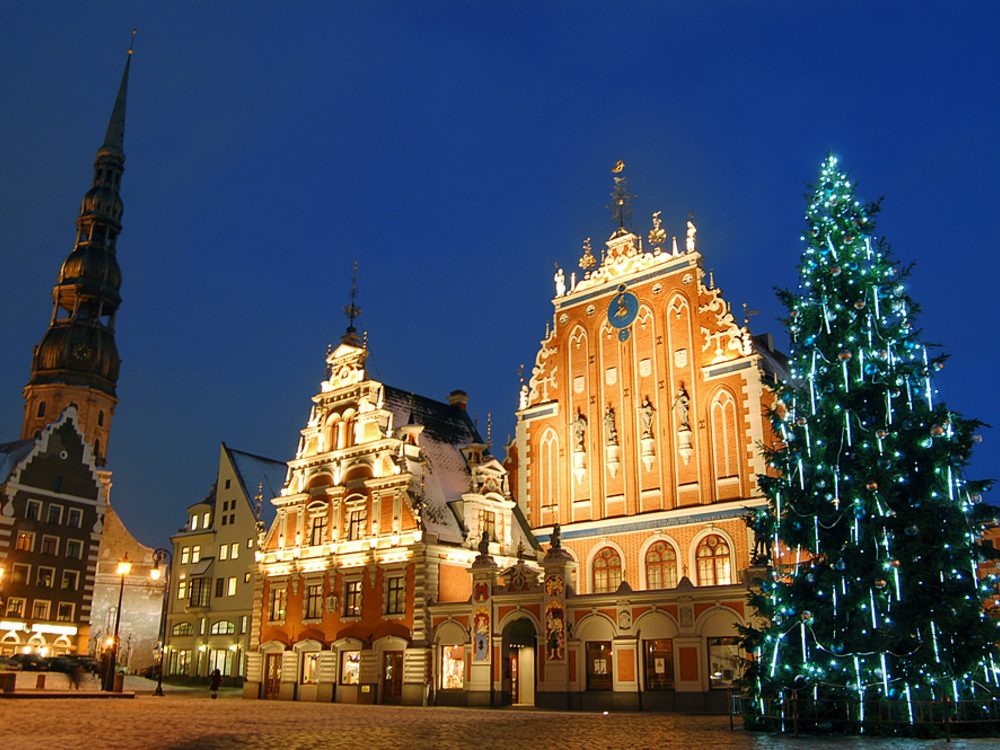There is no actual documentation as to who can truly lay claim to the creation of the first Christmas tree. Finland has Santa Claus. Russia has traditional handmade Christmas ornaments. Germany has Christmas markets. But arguably the most well-known of Christmas traditions, decorating the Christmas tree, may have its origin in Northern Europe.
The History of the Christmas Tree
To learn about the historical background of the very first Christmas tree, we have to dig deep into the past. Just as we have seen with Santa Claus, there are many stories, legends and multiple facts and customs that are combined to bring us the big picture. The first documented use of a tree in a winter Christmas celebration was in several locations in Northern Europe including the current countries of Estonia, and Latvia in the late 15th and early 16th centuries.
All verbal accounts from the people in early European cultures of the exact origin of the Christmas tree are quite vague. There are a lot of disputes over which of the Baltic towns was the first to decorate the Christmas tree.
Its safe to say that the late 15th and early 16th centuries were in a constant state of upheaval and discord. For Latvia and Estonia back then, such country distinctions were not so clear, the cities and their origins being more important. From the Teutonic Knights and the Northern Crusades to the Vikings and then the Hanseatic League of medieval Europe, the Baltic states saw their share of change.
Where the Christmas tree is concerned, it is quite likely that Riga, the capital of Latvia may actually be the first. Riga being somewhat older than the ancient fortress Toompea in the middle of what used to be Tallinn’s Old Town centre site. But then, other factors surely played a roll in who adopted the custom of using a tree in a winter celebration first.
Riga
Riga, which was at the centre of social and religion was also known to be a stopover for pilgrims early on. This is another indicator that the Christmas celebration customs may have originated here first as well.
The guild of German merchants from Lubeck Germany erected a house called the House of Blackheads (Melngalvju nams) in Riga and one by the same name in Tallinn (Mustpeade Maja). Other guilds were also established across the region for the purpose of providing efficient enforcement of inter-city trade. The House of Blackheads was basically a fraternity of young, unmarried merchants and ship captains in the Hansa cities. Due to their exceptional status, the Blackheads played an important role in society; many VIPs of that time (including Russian tsars) took part in events organized by the Blackheads. As a German merchant club, the Brotherhood of Blackheads existed in Riga from about 1334 until 1939.
The Blackhead’s Brotherhood Fraternity archives provided some information about this mysterious “Christmas tree”. They indicate that the tree was decorated, but from understanding the customs of medieval times, leaves us to conclude that it could only have had bouquets of ribbons, dried flowers, straw dolls, weave, and possibly fruit. Later, this “tree” that could not have been a tree, but a wooden frame of some sort, was ceremonially burned in the town square in the first week of January after all the festivities that were common of the times, were over.
In 1584, the pastor and chronicler Balthasar Russow wrote of an established tradition of setting up a decorated spruce at the market square. It was here that the young men “went with a flock of maidens and women, first sang and danced and then set the tree aflame”. In that period, the guilds started erecting Christmas trees in front of their guildhalls.
The Elusiveness of it All
But, little is known about the original Riga tree other than the above story. Most of this early documentation is written in Old German and it is difficult to locate all related documents. Which means that one is forced to come up with their own ideas. In addition, much research indicates that the origins of this powerful and elite guild remain shrouded in secrecy. And there are many other stories that claim the origins of a decorated tree.
Even if we never come to know the exact historical beginnings, it is a well-known fact that the Christmas tree is a symbol of hope and happiness, stemming from pagan traditions that the Evergreen tree is a symbol of the renewal of life. And it is a tradition that goes well beyond buying of gifts and other monetary trappings that seem to go along with the season.
Information credit – http://www.firstchristmastree.net/
ItsGoa/DEC/KDGP


